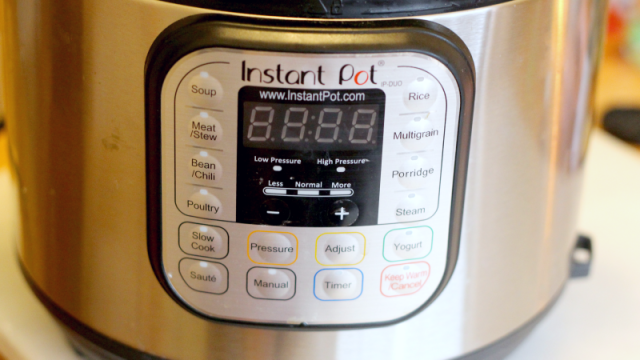I really, truly love my press cooker and, based on the many blogs, recipes and Facebook groups, the rest of the world does too. But, as with any hyped appliance, things can get a little out of control. Knowing when not to use a pressure cooker can be just as valuable as knowing when you should use it.
I may have almost failed thermodynamics, but even I know: the higher the pressure, the shorter the cooking time. This makes pressure cookers great for fibrous vegetables, cuts of meat that have a lot of connective tissue, hearty grains and dried beans.
Of course there are outliers — pressure cookers make great hard-boiled eggs and surprisingly good cheesecake, but there are also foods that just don’t jive in a cooker. In fact, if you started out with these, you might just end up hating your pressure cooker, and that would be too bad.
Delicate vegetables
Though a pressure cooker will change your sweet potato game, and deliver unto you some pretty ace mashers, it is not great for delicate greens. Basically, if a vegetable is well-suited to blanching — think tender asparagus or bright green broccoli — there’s no real reason to drag your pressure cooker out.
I have cooked broccoli in my pressure cooker exactly once, and I set it to zero minutes. By the time the cooker came to pressure, the broccoli was done, with some of the pieces being overcooked by some people’s standards. Blanching or steaming on the stove is just as easy, and those two methods let you see the vegetables as they cook, meaning you won’t end up with mushy produce.
Fragile shellfish
Prawns, mussels and the like cook quickly, and can turn rubbery and unappealing if overdone. Though a pressure cooker would be a great option for seafood stock, there’s no reason to brutalise fresh shellfish with intense pressure. Because pressure cooking is not really all that instant — it takes several minutes to actually come to pressure — it’s not always a time-saver. In fact, in the case of mussels, the stove top is the quicker route. I also get nervous if I can’t visually monitor my shellfish and remove it from the heat the moment it is done — a task that is completely impossible in a pressure cooker.
Pancakes
There is a reason they’re called “pancakes” and that reason is because you should make them in a damn pan. The pressure cooker pancake — or iPancake — is gummy and dense, with a thick, crunchy crust. It is bad and I do not like it.
Almost all baked goods
Pressure cooker cheesecakes are a good thing. Due to the pressure cooker’s moist environment, it’s not a bad way to cook custard-y or pudding-like desserts. But pressure cookers are a horrible place to bake bread, or any cake you wish to have a delicate crumb.
Ovens are in your kitchen for a reason, and it’s ok to use them. You will never get a good crust in a sealed, wet environment, so just say no to pressure cooker baking. (You can, however, use it for proofing small loaves, but we here at Lifehacker were not satisfied when attempting to try IP proofing on a large scale.)
Anything you want to tinker with
If you like to taste and tinker your food as it cooks, a pressure cooker may give you sad feelings. Once you seal the thing, there’s no opening it up to “check.” This is fine for the most part, but if your seasonings aren’t quite right, you’re stuck with the outcome. (You can add in stuff at the end, but that’s not quite the same, and you definitely can’t un-season.) The best way to combat this is to either use tried-and-true recipes you know you love, or just accept the learning curve, and don’t experiment with expensive food.
Just because something makes excellent short ribs doesn’t mean it can turn out a soufflé, and knowing your pressure cooker’s weak spots will let you focus on its strengths, making it that much more valuable in the kitchen.

Comments